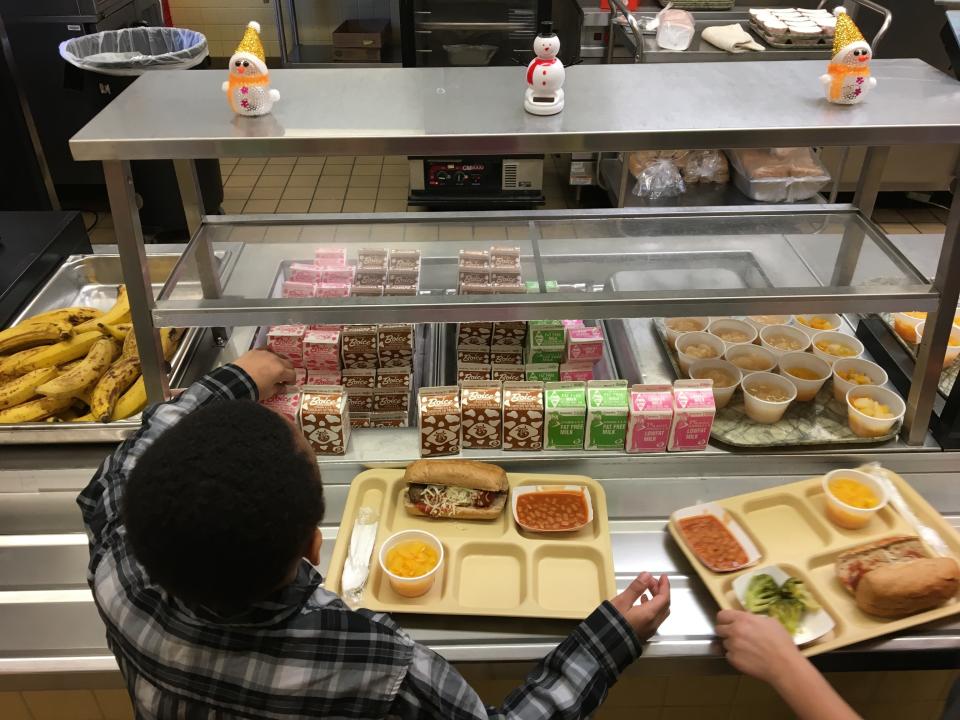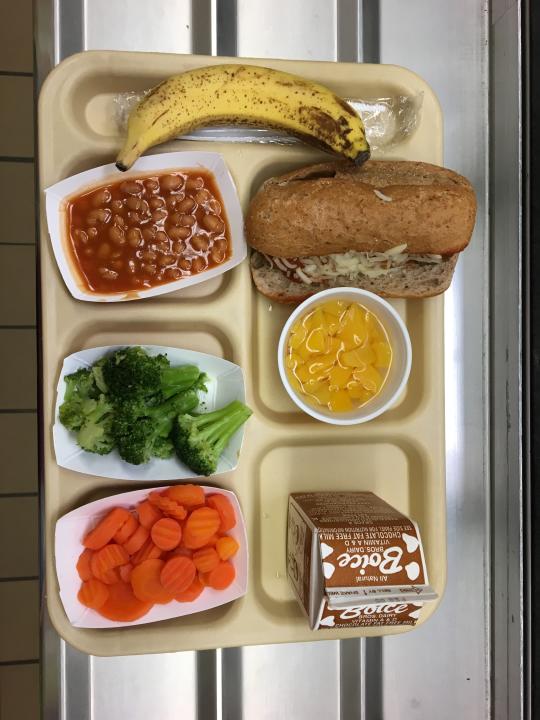NYC families get financial relief in the form of free school lunches

When adults look back on school lunches, it’s typically filled with memories of chicken finger Thursdays and grouchy lunch ladies. But for millions of families around the nation it means another annual expense. And for kids it can be a stressful and intimidating experience.
Taking this into consideration, New York City announced on Sept. 6 that school lunch will now be provided at no cost to public school students. Effective immediately, 1.1 million children in New York will enjoy carrot sticks, pizza, and boxed milk for free. (The city has offered free breakfast to all students since 2003.)
For some, school lunch in New York used to cost $1.75 a day, meaning that families had to pay $300 a year per child. The Community Eligibility Provision (CEP), a USDA federally assisted meal program, will fund free school lunches for all students in the city. CEP allows schools in low income areas to provide meals and get reimbursed for the cost.
Previously, many families struggled to pay daily lunch fees because they weren’t eligible for food assistance based on their household income, said Liz Accles, Executive Director at Community Food Advocates in New York. The new mandate will offer financial relief to families struggling to make ends meet.
Food insecurity has been a big issue in New York City, with 75% of students qualifying for free or reduced lunch. Even so, a good chunk of those students didn’t take advantage of the program. Some missed the opportunity because parents neglected to fill out paperwork, while others opted out because of what many call lunch shaming — or when students are teased for being unable to pay their lunch bill.
“About 250,000 eligible students weren’t participating,” said Accles. “And that happens as kids get older and become more aware of social pressures and income issues.”
Eliminating lunch shame

You might assume that most families can afford to pay for lunch, but that’s not entirely true. In fact, according to the USDA, school cafeterias served almost 5 billion lunches in 2014, over two-thirds of which were free or at a reduced price. In 2014, The National School Lunch Program provided low-cost or free lunches to more than 30.3 million children a day in the U.S, costing nearly $12.6 billion.
Even so, the stigma still exists, and school districts around the country have struggled with how to address the issue of feeding students while reducing the occurrence of shaming kids because their parents can’t pay.
In June 2016, a child in Alabama was sent home with a stamp reading “I need lunch money.” The boy’s father said that his son was branded, and urged the school to adopt other tactics to inform parents of a low lunch account balance. “When you start stamping a message on a child’s body instead of calling … it’s not okay,” he told Alabama.com.
There have also been documented cases of schools pulling trays away from students, or making them eat cheese sandwiches if their parents forgot to pay.
Stories like this, and his personal experiences, inspired New Mexico state Sen. Michael Padilla to take action against lunch shaming. Padilla grew up in the foster care system and would mop cafeteria floors to earn school lunch. He remembers the shame he felt, so earlier this year he introduced the “Hungry-Free Students’ Bill of Rights Act,” which Gov. Susana Martinez of New Mexico signed into law April 2016.
The law provides rules for getting students enrolled in free lunch programs, but also features a section about anti-stigmatization. According to the bill, schools are prohibited from publicly identifying students who can’t pay for a meal, which means tactics like stamping a child’s arm or making a child wear a wristband are out of the question.
Schools in New Mexico are also prohibited from making students complete work or other duties to pay for their meal. And lastly, all conversations about meal debt and payment are to be directed at parents and not the student.
For Padilla, this bill helps to shed light on lunch shaming and puts the focus back on what matters: “the child’s well-being rather than the debt itself,” he told NPR.
Other cities providing free lunch

New York is not the first city to provide free public school lunches. In 2013, Boston Public Schools (BPS) started providing free breakfast and lunch. The cost of lunch was $2.25 for elementary students and $2.50 for middle and high school students, so families ended up saving $405 to $455 per child every year.
Since then, BPS has continued to focus on the nutrition of its 57,000 students. Taking it a step further, BPS signed a contract with Revolution Foods in July to be the district’s breakfast and lunch provider through 2020 to provide healthy free food. Revolution Foods uses fresh local and regional produce, avoids preservatives, prohibits the use of high fructose corn syrup, and bans trans fat. Their meals are fresh, which means that only 1% of the BPS food inventory will be frozen.
Detroit started offering free lunch to students in 2011, Dallas started in 2013, and there are currently 700 schools in Georgia, including 60 in Atlanta, that offer free meals to all students.
Last month, Hurricane Harvey ravaged parts of Texas, causing extensive flooding and widespread damage. In response, The Houston Independent School District announced that they will provide public school students with three free meals (breakfast, lunch, and dinner) a day for the upcoming school year which begins on Sept. 12.
The reality for many children is that meals they eat at school may be the only ones they get. For Accles, this is what makes the free lunch program a crucial piece of education.
“If you want kids to thrive in school, if you want to address education inequality, you must make sure kids have access to food during the day,” she told Yahoo Finance. “If you can do this in New York City given the scale and size, you can do it anywhere.”

